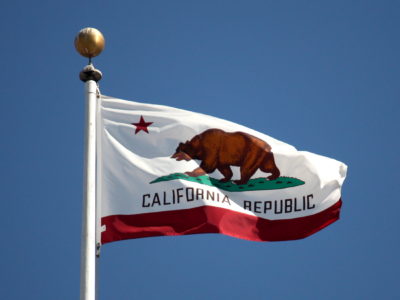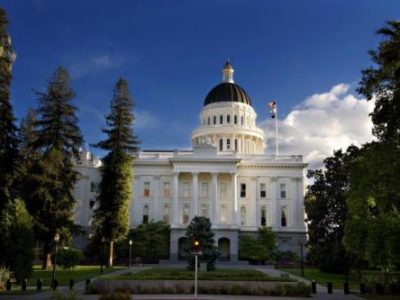California climate policy
Guest Blogger Ken Alex: California’s Building Energy Efficiency Mandate
Post #3 in a Series on California Climate Policy by Ken Alex, Senior Policy Advisor to Gov. Jerry Brown
[This is the third post in a series expressing my view of why California’s actions on climate change are so important and how they will change the world. The introductory post provides an overview and some general context.] Energy usage associated with buildings is substantial. There are different ways to calculate it, but the California …
Continue reading “Guest Blogger Ken Alex: California’s Building Energy Efficiency Mandate”
CONTINUE READINGGuest Blogger Ken Alex: California’s Renewable Portfolio Standard
Post #2 in a Series on California Climate Policy by Ken Alex, Senior Policy Advisor to Gov. Jerry Brown
[This is the second post in a series expressing my view of why California’s actions on climate change are so important and how they will change the world. The introductory post provides an overview and some general context.] SB 350 (2015) requires that California’s investor and municipal owned utilities provide 50% of their customer’s electricity …
Continue reading “Guest Blogger Ken Alex: California’s Renewable Portfolio Standard”
CONTINUE READINGGuest Blogger Ken Alex: California’s Vision on Climate Change
Post #1 in a Series on California Climate Policy by Ken Alex, Senior Policy Advisor to Gov. Jerry Brown
California accounts for about one percent of the world’s greenhouse gas emissions. As the Brown Administration enters its final year, I want to set out my view of why California’s actions on climate change are so important and how they will change the world. I thank the faculty at Berkeley Law’s Center for Law, Energy, …
Continue reading “Guest Blogger Ken Alex: California’s Vision on Climate Change”
CONTINUE READINGCalifornia Supreme Court Upholds Regional Planning Agency’s Greenhouse Gas CEQA Analysis, and Sets Out Principles to Ensure Better Analysis in the Future
Decision Will Help Ensure Development and Transportation Planning in California Supports GHG Reduction Efforts
In May, Rick Frank posted his reflections on the oral argument in the California Supreme Court on Cleveland National Forest Association v. San Diego Association of Governments (SANDAG), and predicted that SANDAG would win the case. His prediction has proved correct with the release of the Court’s opinion last week – but SANDAG’s narrow win provides a …
CONTINUE READINGCap and Trade’s Future in California, Redux
Litigation, AB 197 and Politics May All Have an Influence
Two days ago, I posed a series of questions about what AB 197 might mean for the future of cap and trade in California but never really answered the question of whether we’re likely to see a continuation of the program going forward post-2020. Eric posted his view this afternoon that he is relatively pessimistic …
Continue reading “Cap and Trade’s Future in California, Redux”
CONTINUE READINGSB 32 Passage Great News But Legislature Needs to Pass AB 197 Too
AB 197 Would Curtail California Air Resources Board Power, Potentially Restrict Cap-and-Trade
Ethan reported the good news today that the California Assembly passed SB 32, legislation that would extend California’s landmark climate change legislation to 2030 and require deeper cuts in emissions. The original legislation, AB 32, required that California cut its emissions to 1990 levels by 2020. SB 32 requires that the state achieve a 40 …
Continue reading “SB 32 Passage Great News But Legislature Needs to Pass AB 197 Too”
CONTINUE READINGCalifornia’s Path to 2050
Recent research shows that California can meet its 2050 climate goals at an affordable cost.
Could California make deep cuts in carbon by 2050 (80% below 1990 levels)? Are the economics feasible? Those are important questions for California, but they also have a lot to say about what’s feasible for the U.S. and other developing countries as a whole. Last December, UC Davis hosted a forum on the models that …
Continue reading “California’s Path to 2050”
CONTINUE READINGBreaking News: Ninth Circuit Upholds California’s Low Carbon Fuel Standard
Does California’s life cycle analysis of the carbon intensity of transportation fuel facially discriminates against out-of-state ethanol?
In a sweeping victory for the California Air Resources Board, the Ninth Circuit today issued an opinion in Rocky Mountain Farmers Union v. Corey upholding the state’s Low Carbon Fuel Standard (LCFS) and reversing a lower court ruling that the LCFS facially discriminated against interstate commerce in violation of the U.S. Constitution. The court also vacated the …
Continue reading “Breaking News: Ninth Circuit Upholds California’s Low Carbon Fuel Standard”
CONTINUE READINGWill California’s Cap and Trade Program Stimulate Innovation?
Holly’s latest post about a new study showing that cap-and-trade programs have not led to technological innovation ends with a cautionary note that raises the key question about innovation and cap-and-trade programs to reduce greenhouse gas emissions: These results [showing no innovation] don’t mean that cap-and-trade has no role to play in policies directed at climate …
Continue reading “Will California’s Cap and Trade Program Stimulate Innovation?”
CONTINUE READING







